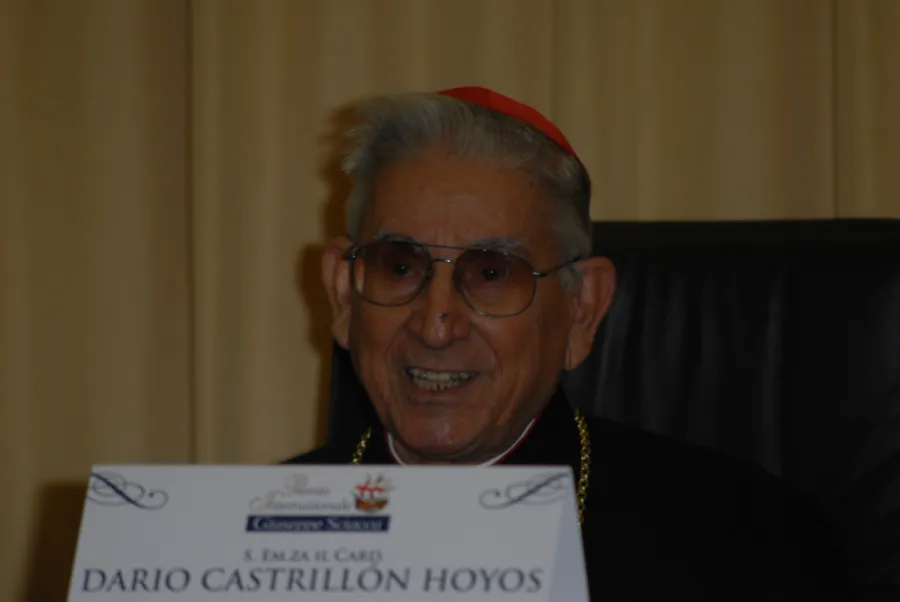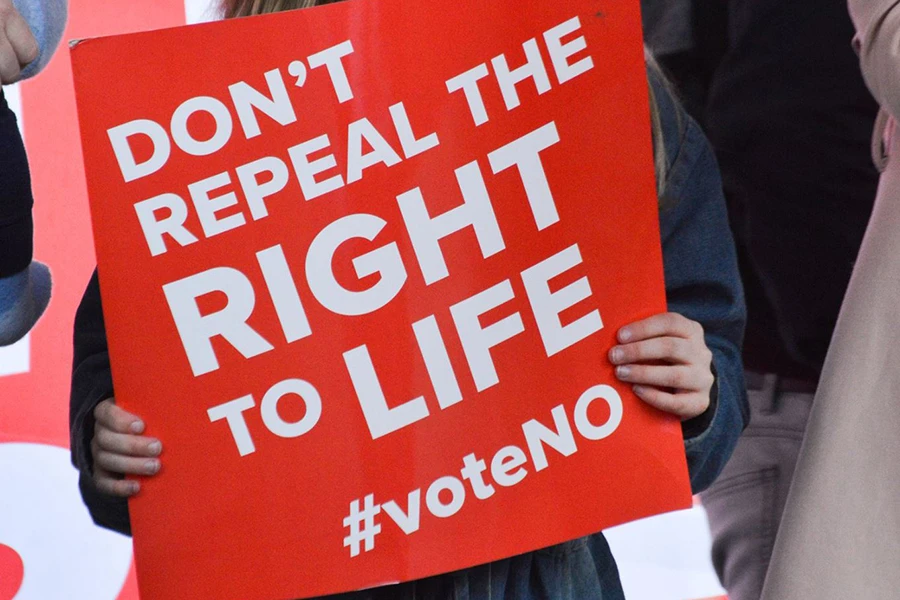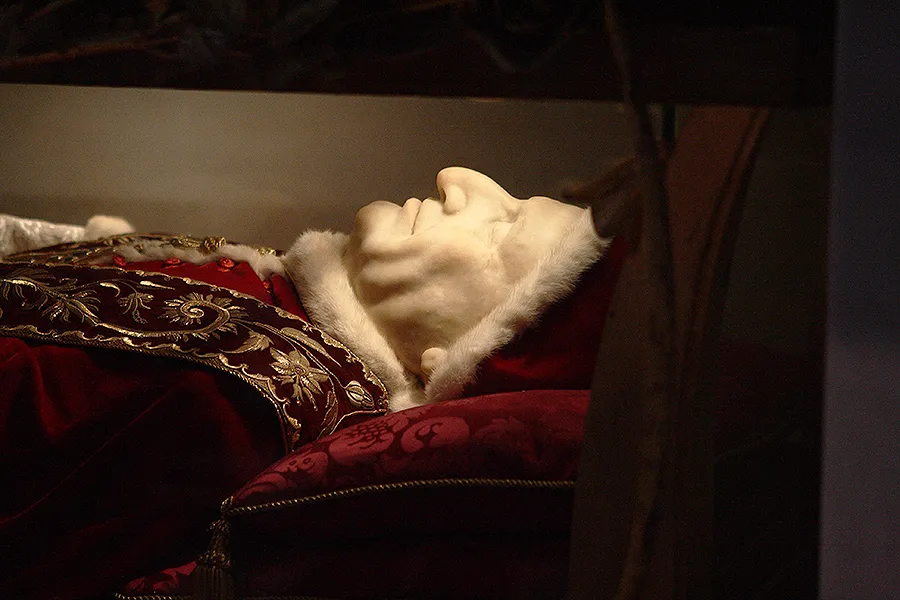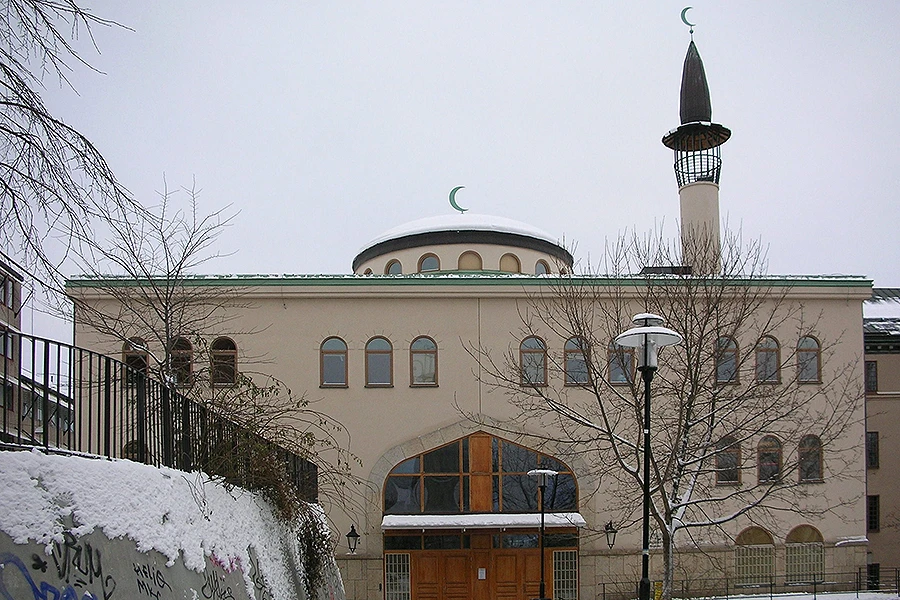
Rome, Italy, May 18, 2018 / 11:41 am (CNA/EWTN News).- Cardinal Darío Castrillón Hoyos, a Colombian and a former head of the Pontifical Commission Ecclesia Dei and of the Congregation for Clergy, died in Rome early Friday morning at the age of 88.
Castrillón, who served as the pontifical commission’s president from 2000 until his retirement in 2009 at the age of 80, was instrumental in the promulgation of Summorum Pontificum, Benedict XVI’s 2007 motu proprio which acknowledged the right of all priests of the Roman Rite to say Mass using the Roman Missal of 1962.
Pope Francis sent his condolences for Castrillón’s death in a telegram May 18, noting the late cardinal’s “generous service to the Church.”
Imploring the intercession of the Blessed Virgin Mary, the pope prayed that the cardinal would be welcomed into joy and eternal peace with the Lord; he also sent his “apostolic blessing to those who share the sorrow of the loss of such a worthy servant of the Gospel.”
Archbishop Oscar Urbina Ortega of Villavicencio, president of the Colombian bishops’ conference, prayed that the Risen Christ would “welcome into the eternal kingdom him who generously served as Pastor of the people of God.”
Born in Medellin July 4, 1929, Castrillón studied at seminaries in Colombia and at Rome’s Pontifical Gregorian University, receiving a doctorate in canon law. He also studied religious sociology, political economics, and business ethics.
He was ordained a priest of the Diocese of Santa Rosa de Osos Oct. 26, 1952, at the age of 23. From 1954-1971 he served at two rural parishes in the diocese and was an official of its curia.
He was appointed Coadjutor Bishop of Pereira in 1971, and succeeded as ordinary in 1976. He remained there until his appointment as Archbishop of Bucaramanga in 1992, where he continued to serve until 1996.
It is said that during his time as bishop in Colombia he would sometimes walk around the streets at night to feed abandoned children and is reported to have entered the home of drug lord Pablo Escobar while disguised as a milkman to demand that Escobar confess his sins.
He incurred disapproval, however, after admitting that he had accepted money from Escobar’s cartel, which most Colombian bishops had refused. He defended the action, saying the money was used for charitable purposes, keeping it from being spend on illegal activities.
He also said at a meeting of the bishops of Latin America in 1984 that he had warned the cartel members that giving money “would not save their souls.”
From 1983-1991 he served as secretary general of the bishops’ conference of Latin America.
At a January 1968 meeting in Lima, Castrillón was among several bishops who denounced liberation theology in Latin America.
In 1996 he was called to work at the Vatican as pro-prefect of the Congregation for Clergy, and two years after was made a cardinal and prefect of the congregation. He remained head of the congregation until 2006.
Castrillón also served as president of the Pontifical Commission Ecclesia Dei from 2000 until his 2009 retirement. The commission is responsible for institutes and communities which use as their proper Rite the extraordinary form of the Roman rite (the Roman Missal of 1962). It is also responsible for discussion with the Society of St. Pius X (SSPX), a priestly fraternity which is in an irregular situation and whose priests do not legitimately exercise their ministry.
While he was president of Ecclesia Dei, he oversaw the regularization of a traditionalist priestly society in Brazil, which became the Apostolic Administration of St. John Vianney, and of the Transalpine Redemporists (the Sons of the Most Holy Redeemer). It was also during his tenure that the excommunications of the SSPX bishops who were illicitly consecrated in 1988 were remitted.
In 2003, Castrillón celebrated the first Pontifical Mass in a Major Basilica since the liturgical reform which followed the Second Vatican Council, at St Mary Major.
He was criticized in 2010 for a letter he had written in 2001, as prefect of the Congregation for Clergy, in which he congratulated a French bishop for not reporting a priest to the authorities for sexual abuse of a minor.
Bishop Pierre Pican, who had received a suspended three-month jail sentence for his failure to report the abuse, had admitted in court that he had kept the priest in parish work even though he had privately admitted to committing acts of abuse.
In the letter, the cardinal wrote that Pican “acted well,” and that he was pleased that a fellow bishop “preferred prison to denouncing his son and priest.”
Castrillón went on to say that he believed relations between a bishop and his priests were more than professional but had “very special links of spiritual paternity,” which therefore did not oblige bishops to testify against their priests.
Castrillón’s funeral Mass will take place in St. Peter’s Basilica May 19. Cardinal Angelo Sodano, dean of the College of Cardinals, will be the principal celebrant. As customary for the funerals of cardinals, Pope Francis will preside over the final commendation.
 […]
[…]






